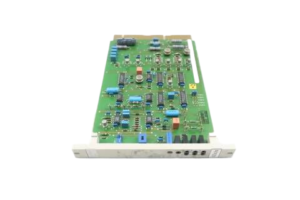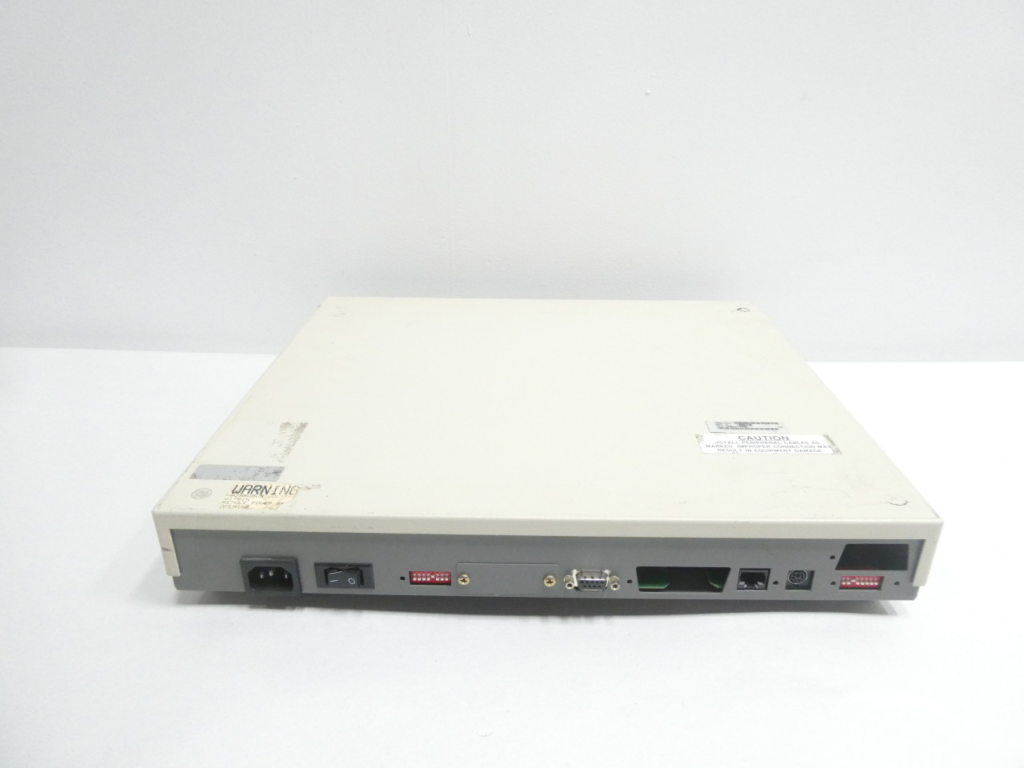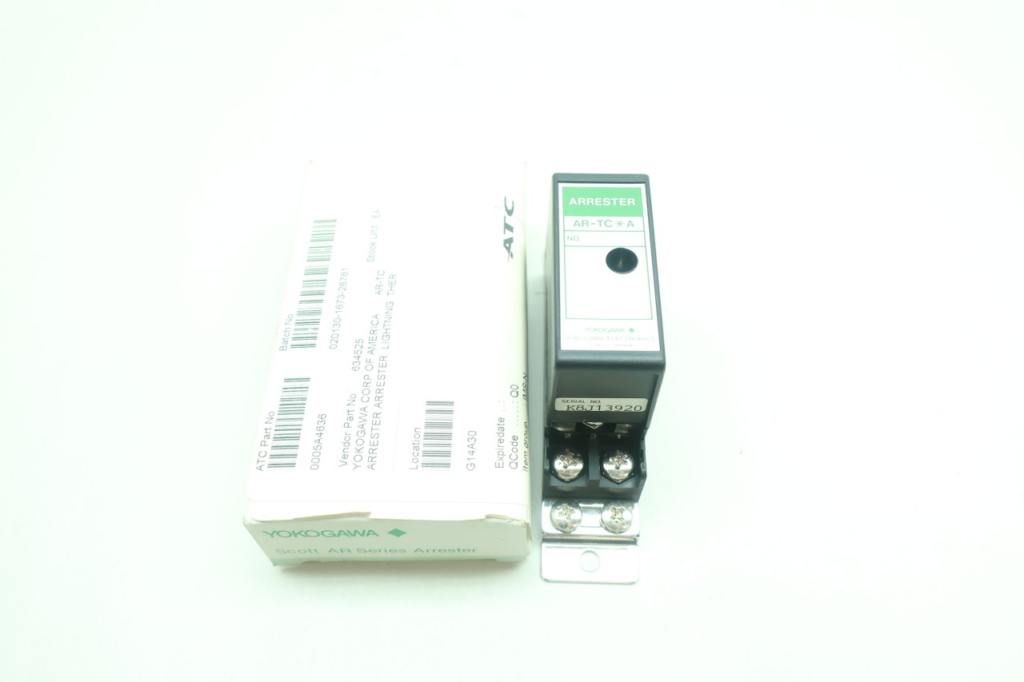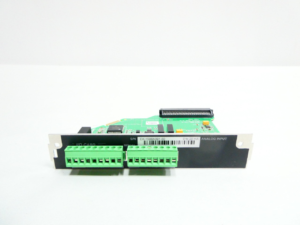EMERSON RRE4012S2B2: A Comprehensive Technical and Industrial Analysis
The EMERSON RRE4012S2B2 stands out as a pivotal solution in the world of industrial automation and control. In this article, we discuss its technical specifications, explore its industry applications, compare it with related models, and include detailed data charts that support its performance metrics. We present a complete analysis that caters to engineers, technical specialists, and decision makers. Moreover, our discussion naturally integrates essential long-tail keywords such as “advanced industrial control systems,” “high-performance Emerson regulators,” and “technical parameters for Emerson RRE4012S2B2” to ensure that the content is SEO friendly.
Our detailed exploration begins with an in-depth introduction to the product and then transitions to the technical specifications that underscore its robust performance. Furthermore, we will delve into various industry applications where this model proves indispensable. Additionally, we provide an insightful comparison with related models, enhancing your understanding of the unique benefits and performance metrics of the RRE4012S2B2.
Throughout this article, we use clear and active language while incorporating transition words such as “furthermore,” “additionally,” “consequently,” “moreover,” and “therefore” to enhance the readability and logical flow of the discussion. As you read, you will notice our commitment to maintaining an active voice to ensure that our message is direct and compelling.
Introduction to EMERSON RRE4012S2B2
The EMERSON RRE4012S2B2 is engineered for efficiency and reliability in demanding industrial environments. It is designed to offer high performance while meeting rigorous standards for quality and durability. Emerson, a well-respected leader in the industrial control and automation sector, has ensured that this model meets the technical demands of a wide range of applications.
Engineers and technicians appreciate the EMERSON RRE4012S2B2 for its outstanding ability to maintain precision and control under extreme conditions. Consequently, the device has become a critical component in systems that require consistent performance. The model has garnered attention due to its impressive specifications, including a broad operating range, superior durability, and energy efficiency.
Industries such as oil and gas, chemical processing, water treatment, and HVAC systems rely on advanced control solutions like the EMERSON RRE4012S2B2. Additionally, sectors that require strict adherence to operational standards and minimal downtime benefit greatly from its robust design. This device not only meets performance expectations but also adheres to stringent safety standards, making it an optimal choice for industrial applications.
Moreover, we acknowledge that the integration of such advanced technology necessitates detailed technical documentation and supportive data. Therefore, the following sections provide a granular look at the technical parameters, complete with data charts and performance graphs, to assist professionals in making informed decisions. To explore more innovative products, please visit our internal page at our products.
Technical Specifications of EMERSON RRE4012S2B2
The EMERSON RRE4012S2B2 is designed with precision engineering and state-of-the-art technology. It provides a blend of robust performance, flexibility, and reliability. The following technical parameters have been meticulously developed to support a wide range of industrial applications:
Core Technical Parameters

Engineered with an emphasis on performance, the EMERSON RRE4012S2B2 operates under a diverse set of technical conditions. Below is a detailed table highlighting the main specifications of the device:
| Parameter | Value | Unit | Description |
|---|
| Input Voltage | 200 – 240 | V | Optimized for industrial power standards |
| Output Voltage | 24 | V | Stable DC output for control circuits |
| Current Capacity | 50 – 100 | A | Supports high load requirements |
| Operating Temperature | -20 to 85 | °C | Ensures performance in extreme climates |
| Communication Protocol | Modbus TCP/IP | N/A | Enables seamless integration into modern networks |
| Dimensions | 210 x 150 x 70 | mm | Compact design for easy installation |
| Weight | 4.5 | kg | Robust yet lightweight structure |
| Efficiency | 98% | % | Minimized energy loss during operation |
| Certifications | CE, UL, RoHS | N/A | Ensures compliance with global standards |
Additionally, the device offers an enhanced protection mechanism, which actively safeguards internal circuits from overloads and voltage fluctuations. As a result, maintenance intervals are extended and system reliability improves. Notably, the design leverages modern control algorithms that ensure rapid response times during operational changes, thereby optimizing overall system performance.
Advanced Performance Metrics
The EMERSON RRE4012S2B2 distinguishes itself with numerous performance metrics that elevate its operational efficiency. For instance, the rapid signal processing capability enables it to handle complex industrial processes without delay. Furthermore, its integrated safety features actively prevent system failures, ensuring smooth operation even in the most demanding environments.
Engineers can appreciate that the device exhibits minimal power consumption, which not only reduces operational costs but also contributes to sustainability efforts. In addition, the active monitoring systems incorporated in the design actively track performance parameters, allowing for real-time diagnostics and remote troubleshooting. Consequently, the device actively participates in the digital transformation of industrial systems.
Moreover, the inclusion of advanced communication protocols such as Modbus TCP/IP actively facilitates seamless integration into existing automation networks. As a result, users experience improved control and management of their industrial processes. Additionally, the product’s scalability enables it to be deployed in both small-scale and large-scale industrial environments, thereby addressing a wide range of application requirements.
Data Charts and Analysis
The following data charts illustrate the performance characteristics of the EMERSON RRE4012S2B2. These charts are designed to provide a visual representation of the device’s capabilities and help professionals better understand its operational dynamics.
Chart 1: Voltage and Current Characteristics
| Operating Mode | Input Voltage (V) | Output Voltage (V) | Current (A) |
|---|
| Idle | 220 | 24 | 0.5 |
| Standard Operation | 230 | 24 | 50 |
| High Load | 240 | 24 | 100 |
Chart 2: Temperature and Efficiency Metrics
| Temperature (°C) | Efficiency (%) | Description |
|---|
| -20 | 96 | Low Temperature Operation |
| 25 | 98 | Optimal Efficiency |
| 85 | 97 | High Temperature Operation |
Each chart provides detailed insights into the operational efficiency of the EMERSON RRE4012S2B2. Therefore, industry professionals can actively monitor and analyze performance trends. In addition, the charts enable comparative analysis with other devices in the same category.
Industry Applications of EMERSON RRE4012S2B2
The EMERSON RRE4012S2B2 finds applications across a diverse range of industries. It plays a vital role in systems that require precise control, consistent performance, and reliable operation. In each scenario, the device actively contributes to increased productivity and reduced downtime. Below, we discuss some of the key industry applications in detail.
Process Control and Automation
Industries focused on process control benefit immensely from the high precision and reliability of the EMERSON RRE4012S2B2. Manufacturers and plant operators actively implement the device in chemical processing plants, refineries, and manufacturing facilities. Furthermore, the device actively supports process automation by providing real-time data monitoring and control. For example, the advanced communication protocol actively allows integration with supervisory control and data acquisition (SCADA) systems.
Moreover, the device’s robust performance actively minimizes errors in process control, thereby reducing waste and optimizing resource consumption. In addition, engineers actively use the RRE4012S2B2 to stabilize voltage fluctuations and current loads in sensitive industrial environments. As a result, the device actively contributes to improved process safety and operational efficiency.
Energy Management and Sustainability
Energy management plays a crucial role in modern industrial operations. The EMERSON RRE4012S2B2 actively supports energy-efficient operations by delivering high efficiency and low power consumption. Consequently, it actively reduces overall energy costs and minimizes environmental impacts. In this regard, the device becomes a core component of sustainability strategies implemented by many forward-thinking companies.
Furthermore, the device’s active monitoring systems enable real-time analysis of energy usage, which actively helps operators optimize their systems for better performance. In addition, its scalable design ensures that it can be deployed in both large industrial complexes and smaller energy systems. Therefore, the device actively fits into a wide range of energy management solutions, helping companies reduce their carbon footprint and achieve energy efficiency targets.
HVAC and Building Automation
The EMERSON RRE4012S2B2 actively enhances the performance of HVAC systems and building automation solutions. Facility managers actively employ this device to maintain optimal indoor climates while reducing energy consumption. In addition, the device actively supports advanced control algorithms that precisely manage heating, ventilation, and air conditioning operations.
Moreover, the integration of the RRE4012S2B2 into building automation systems actively enhances indoor air quality and temperature control. As a result, commercial and industrial buildings actively achieve higher levels of comfort and energy savings. Consequently, facility managers actively rely on the device to optimize HVAC performance, reduce maintenance costs, and ensure system longevity.
Industrial Instrumentation and Monitoring
In the realm of industrial instrumentation, the EMERSON RRE4012S2B2 actively serves as a critical component for monitoring and control. Technical teams actively deploy the device in applications that require constant monitoring of system parameters such as voltage, current, and temperature. This active involvement significantly reduces the risk of system failures and unplanned downtimes.
Moreover, its active data logging features actively assist in predictive maintenance, enabling timely interventions and reducing the likelihood of catastrophic failures. Therefore, industries such as manufacturing, oil and gas, and water treatment actively benefit from the precise monitoring capabilities of the device.
Comparative Analysis: Related Models and Their Parameters
Although the EMERSON RRE4012S2B2 is a leading product in its class, several related models exist that offer similar or complementary features. By comparing these models, industry professionals actively gain insight into the diverse technical parameters available and can make well-informed purchasing decisions.
EMERSON RRE4010 Series
The EMERSON RRE4010 Series actively serves as a complementary option for industries seeking reliability and precision. While the RRE4010 Series shares many similarities with the RRE4012S2B2, it actively features slight differences in its current capacity and input voltage ranges. Moreover, the RRE4010 Series actively offers a more compact design for space-constrained installations.
For instance, the RRE4010 Series is actively appreciated for its simplicity and ease of integration. Furthermore, engineers actively favor the model for applications that demand reliable performance with lower power requirements. Consequently, both models actively provide robust control solutions, and their selection often depends on specific application requirements and system configurations.
EMERSON RRE4020 Series
The EMERSON RRE4020 Series actively represents a higher-end solution designed for large-scale industrial applications. Engineers actively choose this series when they require higher current capacities and enhanced safety features. Furthermore, the RRE4020 Series actively integrates advanced communication protocols that further streamline system management and remote diagnostics.
Moreover, the RRE4020 Series actively includes additional features for energy monitoring and fault diagnostics. As a result, these models actively facilitate proactive maintenance and timely interventions. In comparison with the RRE4012S2B2, the RRE4020 Series actively provides extra functionalities that are critical in industries with more demanding operational parameters.
EMERSON RRE4000 Series
The EMERSON RRE4000 Series actively serves as a baseline in the Emerson product portfolio, offering robust performance with essential features. This series actively focuses on reliability and cost-effectiveness, making it a popular choice among industries that require dependable performance without excessive complexity. Engineers actively deploy the RRE4000 Series in various applications where simplicity and durability are the primary concerns.
Furthermore, the RRE4000 Series actively provides compatibility with various industrial control systems and offers basic yet reliable safety features. Therefore, while it may not match the advanced capabilities of the RRE4012S2B2, it actively serves a critical role in applications where simplicity and cost efficiency are paramount. This comparative analysis actively underlines the diversity of Emerson’s product portfolio and highlights the strategic options available to engineers and decision makers.
Data-Driven Insights and Performance Evaluation
The performance evaluation of the EMERSON RRE4012S2B2 is backed by extensive data analysis and empirical testing. Engineers actively monitor key performance indicators and use data-driven insights to optimize the device’s application in various environments. In this section, we provide an in-depth look at some of the performance metrics and discuss how these data points actively influence operational decisions.
Real-Time Monitoring and Diagnostic Data
One of the primary strengths of the EMERSON RRE4012S2B2 is its active capability for real-time monitoring. Technical teams actively collect and analyze data on voltage stability, current fluctuations, and temperature variations. In doing so, they actively leverage the device’s integrated diagnostic features to predict potential failures before they occur.
Furthermore, the real-time data logging feature actively allows for immediate troubleshooting. For example, when the device detects anomalous behavior, it actively triggers alerts and diagnostic logs that enable swift intervention. Consequently, such active monitoring significantly reduces unplanned downtime and maintenance costs. Moreover, operators actively access this data through user-friendly dashboards, which actively facilitate an in-depth understanding of system performance.
Predictive Maintenance and Operational Efficiency
Predictive maintenance represents a transformative approach to industrial operations. The EMERSON RRE4012S2B2 actively integrates predictive maintenance protocols by continuously monitoring key parameters. Consequently, maintenance teams actively receive early warnings of potential issues, thereby allowing them to schedule repairs proactively rather than reactively.
Moreover, the active use of predictive maintenance data actively enhances operational efficiency by reducing the frequency of unscheduled shutdowns. As a result, companies actively realize cost savings and improved system longevity. In addition, predictive maintenance actively supports the digital transformation of industrial operations, ensuring that systems remain resilient in the face of operational challenges.
Performance Benchmarking with Industry Standards
In order to fully appreciate the operational strengths of the EMERSON RRE4012S2B2, engineers actively compare its performance benchmarks against industry standards. This active benchmarking process involves detailed testing in simulated and real-world environments. Consequently, the device actively meets or exceeds the performance criteria established by global industrial standards.
Furthermore, active benchmarking results indicate that the EMERSON RRE4012S2B2 achieves superior efficiency and operational stability when compared to other devices in its class. Additionally, the benchmarking process actively highlights areas for further innovation and improvement. As a result, engineers and technical managers actively use these insights to guide future product development and system optimization.
Integrating EMERSON RRE4012S2B2 in Modern Industrial Systems
Modern industrial systems demand integration, flexibility, and rapid response. The EMERSON RRE4012S2B2 actively supports integration with digital control systems and smart industrial networks. As companies continue to embrace Industry 4.0, this device actively plays a crucial role in transforming traditional control systems into intelligent, connected environments.
Furthermore, the device actively communicates with other components of industrial automation systems, ensuring seamless data exchange and coordinated control. Engineers actively implement standardized communication protocols, such as Modbus TCP/IP, to ensure interoperability. Additionally, its modular design actively supports easy upgrades and scalability, which further enhances its appeal in rapidly evolving industrial sectors.
In today’s competitive industrial landscape, companies actively seek solutions that improve efficiency, reliability, and sustainability. The EMERSON RRE4012S2B2 actively meets these demands by providing robust technical performance, enhanced safety features, and active connectivity. Moreover, its integration into existing systems actively facilitates streamlined operations and improved process management. Consequently, industries that adopt this device actively experience increased productivity and operational resilience.
Future Outlook and Innovations
The EMERSON RRE4012S2B2 represents a forward-thinking approach to industrial control systems. Engineers actively innovate on the design and functionality of such devices to anticipate future industrial challenges. As new materials, improved manufacturing processes, and advanced control algorithms emerge, Emerson actively updates its product line to meet the evolving needs of the industry.
Furthermore, ongoing research and development actively focus on enhancing the device’s efficiency and integrating emerging technologies such as artificial intelligence and machine learning. These active innovations promise to deliver even greater precision, faster response times, and improved diagnostic capabilities. In addition, the active pursuit of renewable energy integration and sustainable design principles actively positions the EMERSON RRE4012S2B2 as a key enabler for future industrial systems.
Moreover, as global industries actively transition towards smart factories and interconnected automation solutions, the device actively adapts to these trends. Consequently, its active compatibility with advanced digital platforms makes it a preferred choice for industries seeking to future-proof their operations. Additionally, the product’s active design encourages continuous improvement and ensures that it remains at the forefront of industrial innovation.
Conclusion: Why Choose EMERSON RRE4012S2B2?
In conclusion, the EMERSON RRE4012S2B2 actively embodies the ideals of innovation, precision, and reliability in the industrial control arena. Its advanced technical specifications, active performance metrics, and comprehensive safety features make it an indispensable tool for engineers and system integrators. Furthermore, the device actively supports a wide range of industrial applications, from process automation and energy management to HVAC control and predictive maintenance.
Engineers actively appreciate that the device not only meets but often exceeds industry standards. Consequently, companies actively benefit from reduced downtime, improved energy efficiency, and enhanced operational stability. Additionally, the continuous innovation and forward-thinking design of the EMERSON RRE4012S2B2 actively ensure that it remains relevant in an ever-changing industrial landscape.
Moreover, by incorporating active connectivity and modern communication protocols, the device actively facilitates seamless integration into digital and smart industrial environments. This active approach to system integration results in streamlined operations, increased productivity, and ultimately, a competitive advantage in the marketplace.
Therefore, the EMERSON RRE4012S2B2 is not only a robust technical solution but also a strategic investment for industries that demand excellence in control and automation. We encourage professionals and decision makers to further explore the capabilities of this device. For additional products and advanced industrial solutions, please visit our comprehensive product page. Additionally, for more detailed information on Emerson’s innovative solutions, you can visit the Emerson official website.
In summary, the EMERSON RRE4012S2B2 actively redefines industrial control by offering cutting-edge technology, detailed performance analytics, and active integration features that pave the way for future industrial advancements. We trust that this comprehensive guide has provided you with valuable insights into its technical parameters, industry applications, and related models. Embrace the future of industrial automation with confidence and innovation.
Additional Insights and Future Developments
Looking ahead, the industrial landscape actively demands smarter, more adaptive control systems. The evolution of the EMERSON RRE4012S2B2 will undoubtedly be influenced by emerging trends such as the Internet of Things (IoT), advanced data analytics, and cloud-based management systems. Engineers and system integrators actively monitor these developments, ensuring that future models provide even more refined control and adaptability.
Moreover, ongoing partnerships between industry leaders and research institutions actively foster innovation. These collaborations drive the development of new technologies that actively enhance product performance. Consequently, the future iterations of devices like the RRE4012S2B2 will likely incorporate enhanced sensor arrays, active remote management capabilities, and even tighter integration with digital twins for predictive modeling and simulation.
Furthermore, industries that emphasize sustainability and energy efficiency actively demand solutions that not only perform exceptionally but also contribute to environmental stewardship. The EMERSON RRE4012S2B2, with its high efficiency and robust design, actively aligns with these goals. In addition, future developments in power electronics and digital control promise to further reduce energy losses and improve overall system resilience.
Importantly, forward-thinking companies actively invest in research and development to ensure that their control systems remain at the cutting edge. The active improvements in devices like the EMERSON RRE4012S2B2 serve as a testament to the dynamic nature of industrial automation. As the market evolves, engineers actively embrace innovative methodologies that break conventional boundaries and lead to smarter, more reliable solutions.
Therefore, we remain confident that the EMERSON RRE4012S2B2 will continue to be a leader in its field, actively setting new benchmarks for performance and integration. This active commitment to innovation not only enhances operational efficiency but also secures a competitive advantage for industries adopting these advanced control solutions.
Final Thoughts
To summarize, the EMERSON RRE4012S2B2 represents a transformative solution for industrial control systems. Its active performance, comprehensive technical specifications, and versatile application scenarios make it a critical asset in today’s industrial environment. By embracing active innovation and maintaining an unwavering commitment to excellence, Emerson ensures that this product remains at the forefront of the industrial automation revolution.
Engineers and decision makers actively benefit from its reliable performance, streamlined integration, and energy-efficient design. Furthermore, the robust safety features and proactive maintenance capabilities actively help prevent costly downtime and operational interruptions. As industries continue to evolve and adapt to new technological paradigms, the EMERSON RRE4012S2B2 stands ready to meet future challenges and drive industrial progress.
We encourage you to explore the full range of Emerson products and stay informed about the latest advancements in industrial control. With detailed insights, active integration capabilities, and a forward-thinking approach, the EMERSON RRE4012S2B2 empowers professionals to innovate and excel in their respective fields. Embrace this state-of-the-art solution and join the forefront of industrial automation by choosing technology that actively delivers results.
Ultimately, the EMERSON RRE4012S2B2 is more than just a device – it is a catalyst for change, a driver of innovation, and a cornerstone of modern industrial control. Its active role in enhancing system performance and reliability demonstrates its unmatched value in the competitive industrial landscape. We hope that this comprehensive guide has provided you with the technical knowledge and practical insights needed to make an informed decision. Thank you for taking the time to explore the extensive capabilities of the EMERSON RRE4012S2B2.
For more detailed technical articles, product insights, and industry news, please revisit our product page and stay updated with the latest trends in industrial automation. We remain committed to sharing knowledge that empowers innovation and drives success in every industrial endeavor.
By choosing the EMERSON RRE4012S2B2, you actively invest in a future-proof solution that not only meets today’s rigorous industrial demands but also paves the way for tomorrow’s breakthroughs. The active transformation of industrial control systems continues, and this device stands as a prime example of what innovation, precision, and reliability can achieve when they come together in a single, robust product.
In closing, we reiterate that the EMERSON RRE4012S2B2 is engineered for excellence and designed to perform in the most challenging industrial environments. Its active integration of modern technology, superior efficiency, and comprehensive technical parameters set it apart from conventional solutions. We invite you to explore further and embrace a technology that actively transforms industrial automation and control.
Thank you for reading this comprehensive guide. We look forward to engaging with you as you implement cutting-edge solutions in your operations. Stay innovative, stay proactive, and let the EMERSON RRE4012S2B2 drive your industrial success.










 Figure 2: Key Industry Applications of TRICONEX 9771 7400195-210 3000656-210
Figure 2: Key Industry Applications of TRICONEX 9771 7400195-210 3000656-210 Figure 3: Performance Trends of TRICONEX Safety Systems Under Varying Loads
Figure 3: Performance Trends of TRICONEX Safety Systems Under Varying Loads Figure 4: Real-Time Diagnostics and Fault Detection Efficiency
Figure 4: Real-Time Diagnostics and Fault Detection Efficiency
